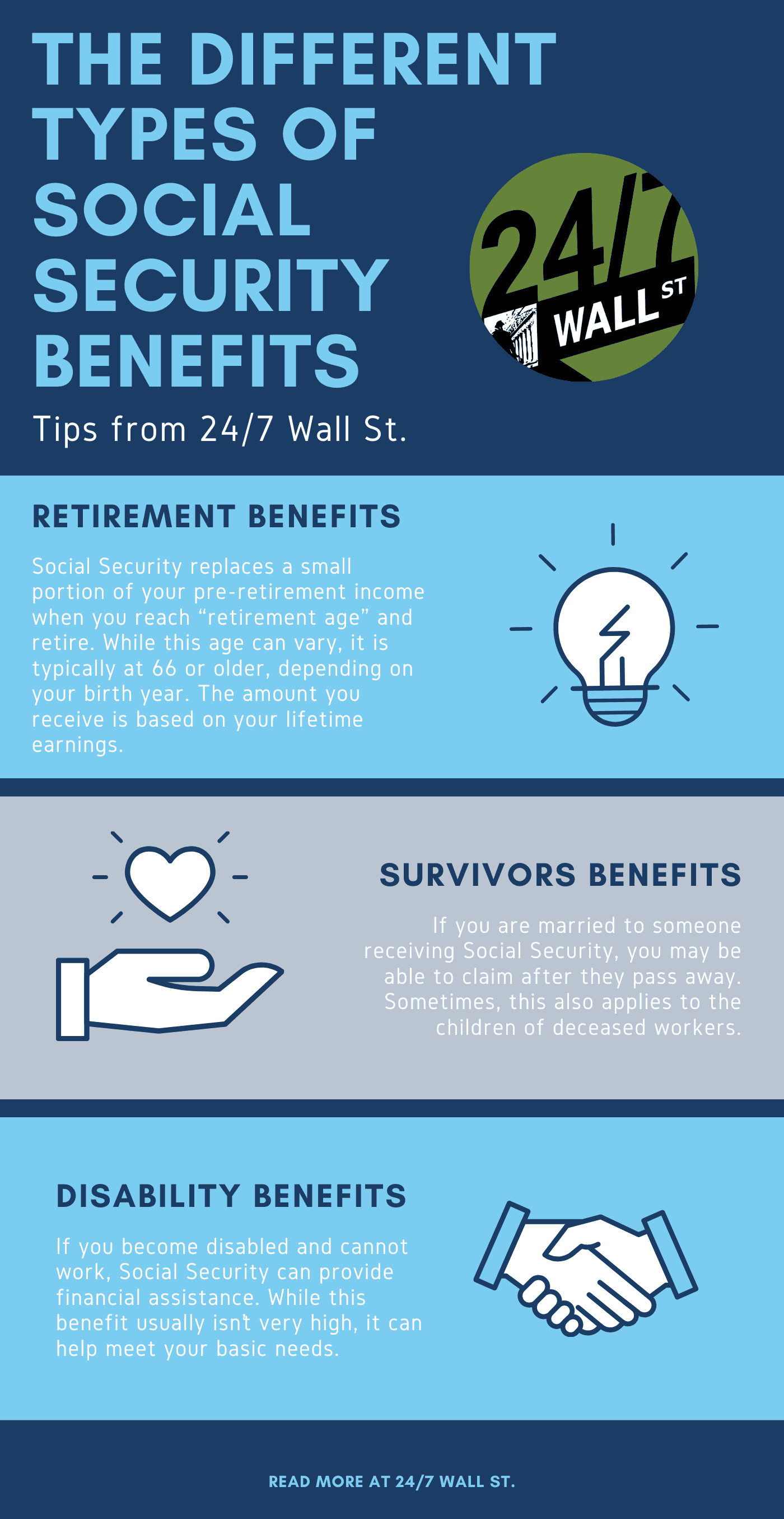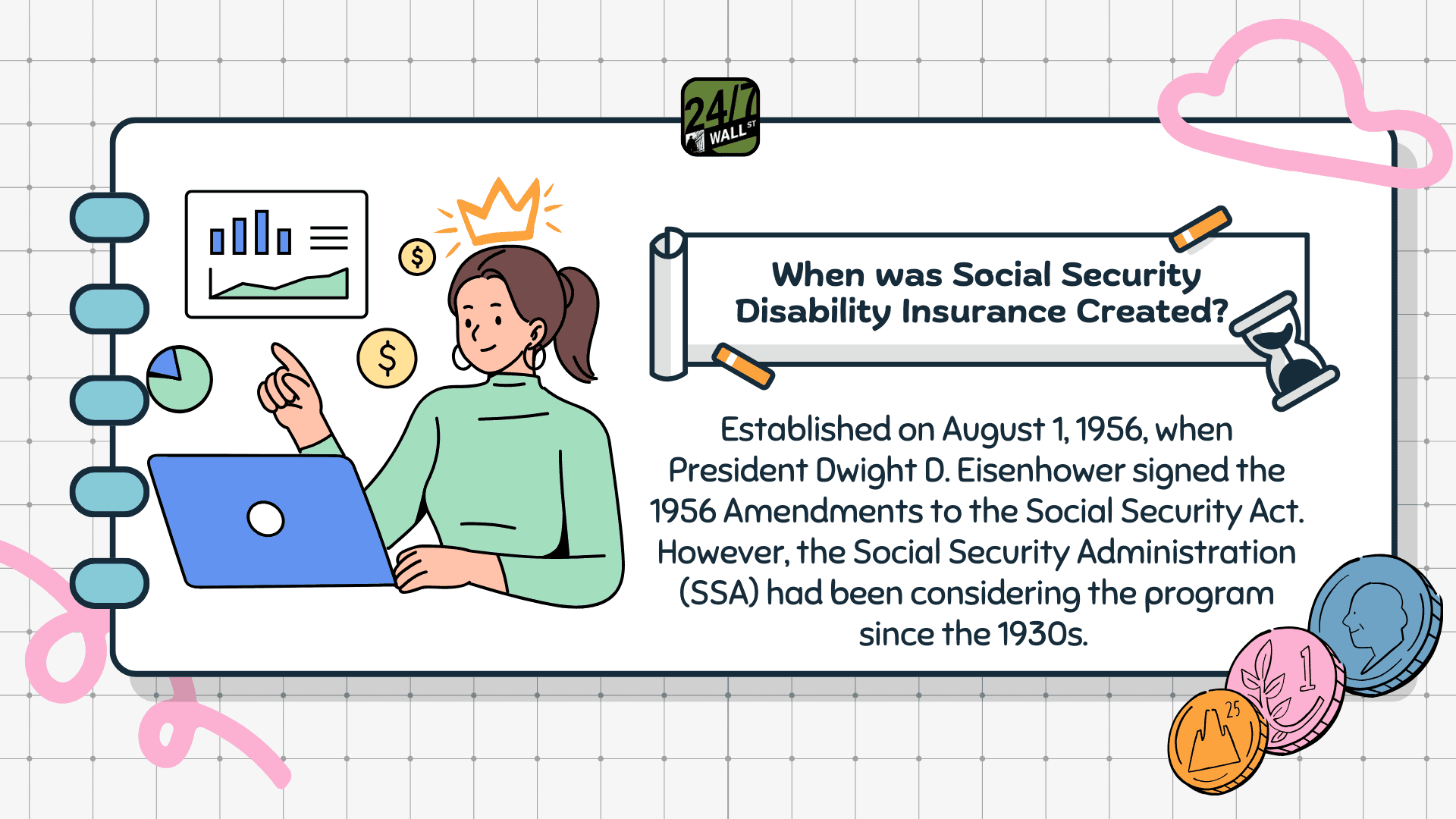Personal Finance
What You Need To Know About Social Security Disability Benefits

Published:
Last Updated:

We’d all like to think that we could never succumb to a disability. However, for 42.5 million Americans, living with a disability is their everyday life. If you’re struggling with a disability, you’re far from alone.
Thankfully, a vital safety net exists – Social Security Disability Insurance. SSDI acts as a bridge, helping individuals with disabilities navigate the gap between their ability to work and their financial needs. By providing a steady income and promoting independence, SSDI empowers individuals to weather the storm of disability and continue caring for their families.
SSDI is a type of Social Security benefit. Dependent adults and minors may also qualify for benefits if the working adult becomes disabled, so consider looking into family eligibility, too.
However, this bridge isn’t exactly easy to navigate. Like many government programs, there are a lot of hoops to jump through. We’ll cover everything you need to know in this article!

A disability can profoundly impact a person’s life. If you’re new to living with a disability (or even not new to living with one), everything is a bit harder. Right when you’re trying to live with your disability, though, the financial repercussions can set in. Someone trying to learn how to walk again does not need to worry about how their bills will get paid.
Sadly, though, this is how it often is.
There are many different ways that disabilities impact finances, including:
All of these financial impacts affect real people every day.

Facing the financial challenges of a disability can seem daunting. Luckily, Social Security Disability Insurance offers crucial support, forming a bridge to help those with disabilities meet their financial needs. Our comprehensive explainer explores exactly how Social Security works, if you want a more in-depth explanation.
For now, let’s explore how SSDI can help disabled individuals meet their financial needs:
SSDI provides a monthly benefit that helps cover basic living expenses, like food, utilities, and mortgages. This steady income provides a sense of security often lost when someone becomes disabled. When receiving monthly benefits, individuals can maintain a more predictable standard of living.
In this way, the individual can focus on managing their health and well-being, not stressing about where their next meal will come from.
Financial independence is crucial for those with disabilities. While family members may be able to help, this only passes the financial burden of the lost income to someone else. SSDI allows individuals to continue caring for their families without relying solely on others.
The ability to provide for oneself fosters dignity and self-worth. When you have a disability, those are often some of the first things threatened! SSDI helps disabled individuals continue to make life choices and live independently whenever possible.
SSDI benefits count towards future Social Security retirement benefits. Therefore, even though disabled individuals cannot work, these benefits help ensure they will have an income source into retirement age.
Many individuals with SSDI also qualify for Medicare, which helps them pay for medical bills, though there is typically a 24-month waiting period. As we discussed above, disabilities often come with increased medical bills, so this is a huge financial relief.
While Social Security Disability Benefits offer an important support system, navigating the path to receiving them can be difficult. Several factors must be kept in mind. Otherwise, your application may be denied.
To qualify for SSDI, you must have proof of the following:
The Social Security Administration lists impairments that automatically qualify for benefits. However, individuals who have a different disability can still qualify if they meet the qualifications above.
For instance, migraines are not listed as a disability. However, you can still prove medical impairment if you have regular migraines, which would qualify for disabilities.
Keep in mind, it often takes months for Social Security benefits to be approved. Some people even wait years!

How much money you can make on Social Security Disability depends largely on your work history. Like many Social Security benefits, disability benefits are based on the amount of taxes you previously paid. They are not flat-rate payments.
Determining how much your Social Security benefits might be can be a challenge. Often, you won’t know exactly until you get approved. However, it is important to understand that these benefits are calculated based on your Average Indexed Monthly Earnings (AIME).The AIME for SSDI is calculated based on the years worked prior to disability.
SSA uses your AIME almost exclusively when determining your benefit amounts.
However, this isn’t a flat formula. You don’t always get a certain percentage of your AIME. Instead, the calculation is tiered. For lower incomes, making even a little bit more can greatly increase your monthly benefit. As you make more, though, the benefit increases less.
It’s a bit like how tax brackets work!
For instance, those with low incomes may receive up to 90% of their monthly income. Those with more income may only receive just over 15%.
You will never get back your full income with SSDI benefits. Even the lowest earners only get 90% back. This means that you need to plan realistically. Your budget will decrease, and you may need extra support from elsewhere. This is where proactive budgeting and exploring additional support systems become crucial to ensure financial stability despite the disability.
While Social Security Disability Benefits are vital, they often don’t bridge the gap to financial well-being. Often, other supports are necessary to completely support someone with disabilities.
Vocational Rehabilitation Programs are one of these options. State agencies and non-profit organizations offer these programs. They provide skills training and job coaching for those with disabilities, allowing them to potentially make money in a new way. They may also provide workplace modifications and show those with disabilities how to perform their previous jobs in new ways.
These programs are most available for those with “common” disabilities. For instance, some programs may help those experiencing blindness learn how to use their phone and function at their workplace again.
Other community resources are also available. Disability advocacy organizations can offer support and information for those with disabilities. Other government assistance programs, such as those that offer low-cost home modifications, also exist.
Having a disability can be exceptionally challenging. However, these organizations and programs can help make adjusting a bit easier. We highly recommend applying and using as many as possible – even if you don’t think you need it first!
Currently, the maximum backpayment for SSDI is 12 months. This means you can receive benefits for up to a year before the date you actually apply for SSDI as long as you were disabled in that timeframe.
Of course, you can only receive benefits for as long as you’ve been disabled. If you applied shortly after your disability, you could not receive 12 months of back pay. At the same time, if you were disabled for two years before you applied, you’ll only receive payment for one of those years.
Back payments do not cover the five-month waiting period; they are calculated after accounting for this waiting period. Therefore, the backpay helps cover that gap.
Learn more about how SSDI works on our Social Security hub page.
Start by taking a quick retirement quiz from SmartAsset that will match you with up to 3 financial advisors that serve your area and beyond in 5 minutes, or less.
Each advisor has been vetted by SmartAsset and is held to a fiduciary standard to act in your best interests.
Here’s how it works:
1. Answer SmartAsset advisor match quiz
2. Review your pre-screened matches at your leisure. Check out the advisors’ profiles.
3. Speak with advisors at no cost to you. Have an introductory call on the phone or introduction in person and choose whom to work with in the future
Thank you for reading! Have some feedback for us?
Contact the 24/7 Wall St. editorial team.